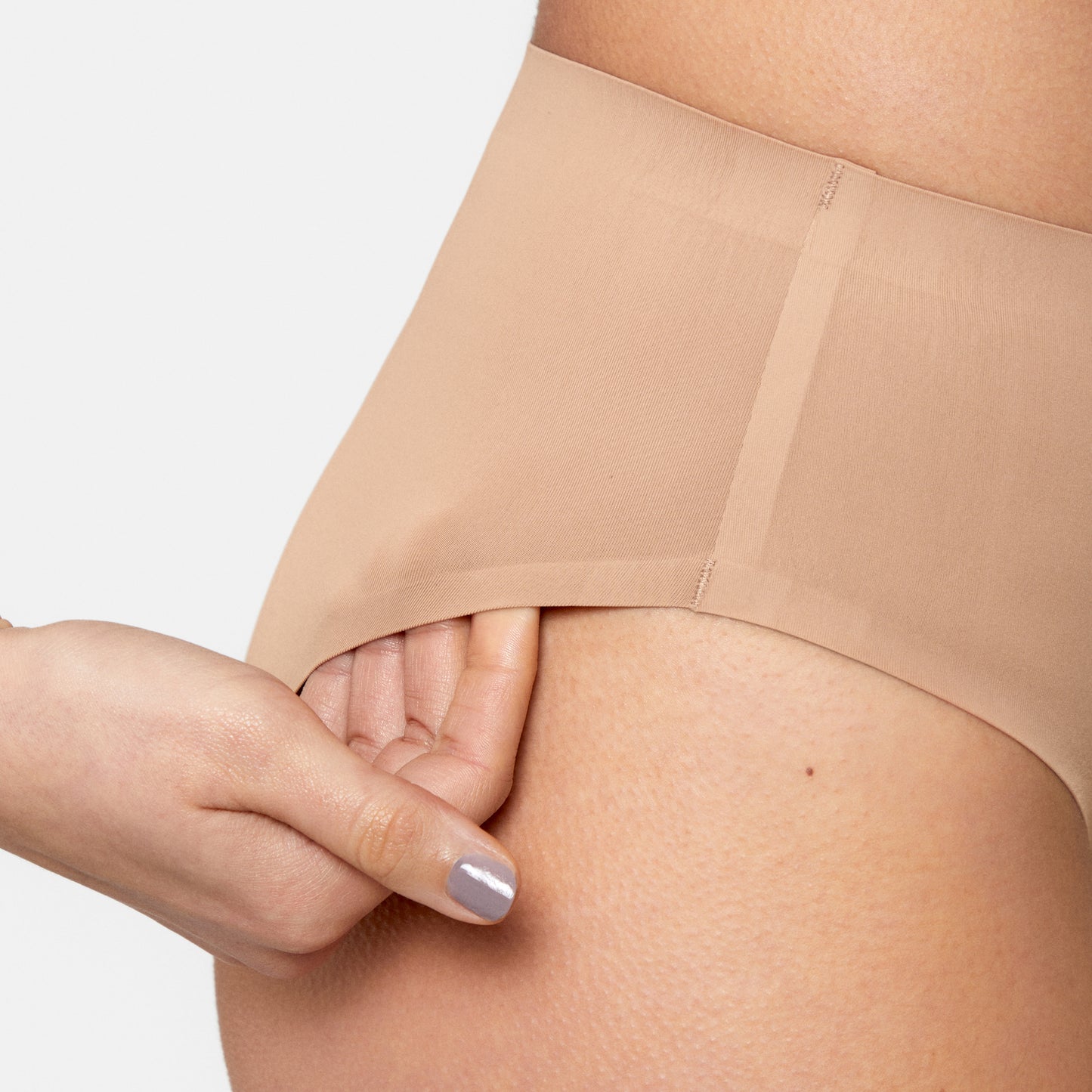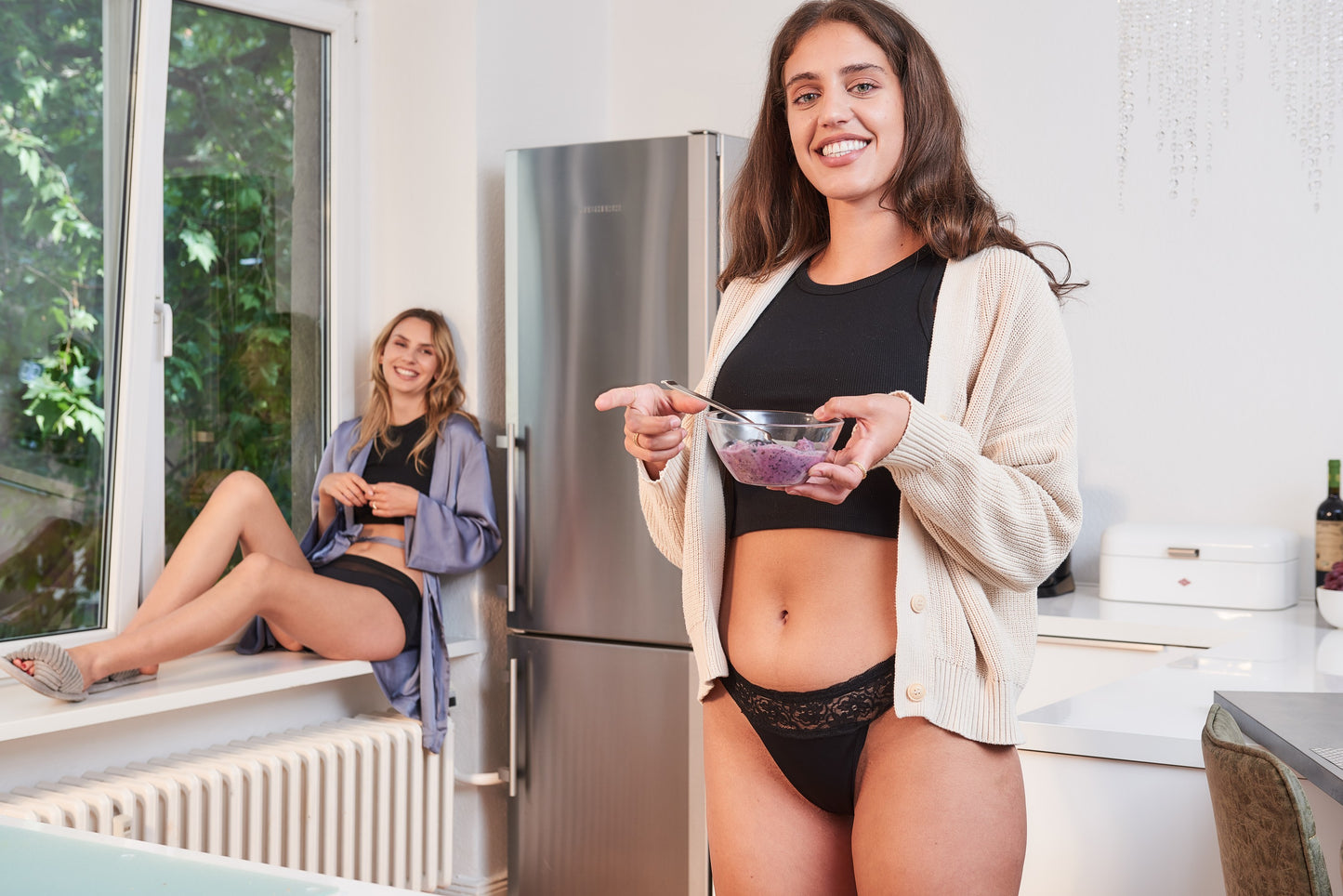Be environmentally friendly with these sustainable period products
For a few years now, there has been a new trend towards sustainable menstrual products. Many women are trying to switch to eco-friendly menstruation products to live more sustainably and consciously. In this article, we will introduce you to environmentally friendly alternatives to traditional pads and tampons.
Period Waste from Disposable Products
Menstruating individuals use 10,000-17,000 tampons or pads in their lifetime. If we multiply this number by 40 years - the average duration of a woman's menstrual cycle - hygiene products cost around 2,000 to 5,000 euros! And it generates over 140 kilograms of waste. Approximately seven billion tampons end up in landfills each year. 90% of hygiene products consist of a cellulose-plastic mixture. The majority of these items end up in the trash, where they take over 500 years to decompose due to their non-biodegradable plastic components.
What are the advantages of sustainable menstrual products?
- Less waste in the bathroom and for our planet
- Sustainable reuse with a lifespan of 3-5 years
- No stress of buying disposable products repeatedly
Period Underwear: Comfortable, Safe, and Sustainable
The idea is as brilliant as it is simple: Period panties serve as menstrual underwear. The panties are made of a 4-in-1 membrane system that absorbs the blood like a pad while still feeling dry. They are reusable and save a lot of disposable waste over time. You can wear period underwear for up to eight hours. After wearing, simply rinse the panties by hand with cold water and then wash them with your regular laundry at 40 degrees Celsius. Menstrual panties are available in different styles for various flow strengths. For a very heavy period, we recommend our model JULE; it can hold as much fluid as three tampons. For a moderately heavy menstruation, we have many alternatives for you. Take a look at our LENE or INSA.
If you're unsure when your period will come and want to be prepared, we recommend our SVEA period thong. It looks like a regular thong but can absorb as much fluid as a tampon. This way, you can feel secure if your period unexpectedly arrives.
You're probably wondering if it doesn't smell, right? The odor of fresh menstrual blood is hardly noticeable, at most slightly metallic. What can smell unpleasant are bacteria that can multiply on any surface. It depends on the regularity of changing. We recommend changing period underwear at least every eight hours or as soon as it starts to feel 'moist'.
Menstrual cup: The invisible silicone companion

Menstrual cups are now available from many providers. What they all have in common is that the cups are bell-shaped and made of soft material. The cups are inserted into the vagina like a tampon. It usually takes a little practice at the beginning, but after a few times, the cup sits comfortably.
The menstrual cup discreetly collects menstrual flow. Instead of throwing it away after removal, it is emptied, washed, and reused. This saves a lot of waste and money in the long run. You can wear a cup for up to 12 hours as its capacity is significantly larger than that of a conventional tampon.
By the way, many menstruating individuals use femtis period underwear as a backup to a menstrual cup. This provides double protection in case of any leaks.
Cloth pads: The washable inserts

How do washable cloth pads work? In short, they work like disposable pads, with the only difference being that the insert is closed at the back of the underwear with a small snap button, hook, or Velcro instead of an adhesive backing. There are also cloth panty liners without closures that can simply be placed in the underwear or between the labia (vulval lips). Just like period panties, you wash cloth pads after use and can then reuse them.
Cloth tampons as an alternative to tampons
A newcomer among sustainable menstrual products: Cloth tampons provide invisible period protection, similar to regular tampons, and also offer advantages for sports and swimming, just like menstrual cups. The fundamental difference is that cloth tampons are washed after use and then placed in the washing machine. The design is also slightly different from that of a regular tampon. The small pieces of cloth are rolled by hand and secured with the attached retrieval string. They can be carried in a small wet bag.
Our femtis period panties are also a great additional protection for cloth tampons! Especially for an active lifestyle, they can provide a sense of security, allowing you to go about your day worry-free.
Menstrual sponges: A renewable natural product
Menstrual sponges are fine-pored Levant sponges that you insert into your vagina. Contrary to what you might expect, these sponges are not plants but rather multicellular organisms. This means that they are not suitable for vegans. They are a renewable natural product, which means they can vary in size and shape. The different shapes and sizes have the advantage of conforming to the shape of your vagina, making it virtually unnoticeable when wearing a menstrual sponge. However, menstrual sponges have one disadvantage: they are not suitable for heavy periods and should only be used for light or moderate menstruation.
Have you found your sustainable period product yet? We at femtis are - quite obviously - Team Period Panties ;-) We understand that period panties may not be the most affordable alternative among period products. That's why we offer quantity discounts starting from three pairs of underwear, allowing you to save up to 20%. Even if you just want to try one pair of period panties: a single panty can replace up to 1,800 disposable products because it can be reused for up to five years. Just imagine how much money and waste you can save!


